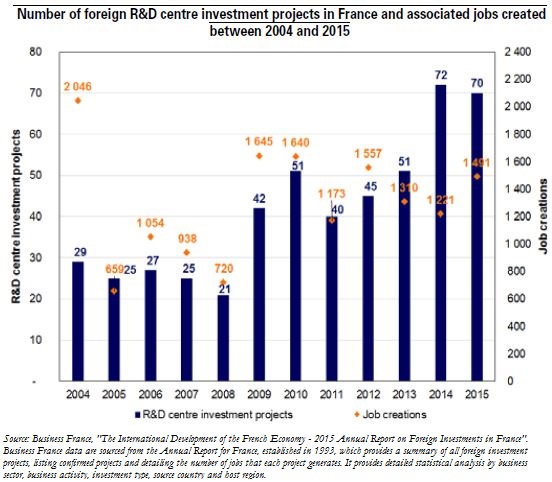Trésor-Economics No. 183 - France and the internationalisation of business R&D
The tendency towards international expansion of the value chain over the past three decades has gradually spread to research and development (R&D) activities, formerly located close to decision making centres. The trend appears to be stabilizing in most European countries, though it is impossible to say whether this slowdown is cyclical or structural. One channel for internationalisation is foreign direct investments in R&D centres, which are mainly created in the major emerging economies of Brazil, Russia, India, China and South Africa (BRICS).
France is playing an active part in R&D internationalisation. There has been an increase in cross-border R&D expenditures, both by French firms locating their R&D abroad and by foreign firms setting up research centres in France.
The economic literature has pinpointed three main reasons for firms to locate their R&D abroad: to make it more cost-efficient, to tailor products to local markets, and to acquire new knowledge.
The factors determining a firm's choice of location vary greatly according to its strategy. Choosing where to locate R&D depends both on the nature of those activities (notably the level of technology and closeness to commercial applications) and on countries' comparative advantages. Accordingly, the bulk of R&D activities based in emerging economies consist of the experimental development phases needed to adapt products to the local market, whereas the activities located in advanced economies mostly involve high-tech and upstream research.
Among European countries, France can make itself more attractive. In view of its comparative advantages, it should give priority to measures aiming at attracting R&D activities at the technological frontier (highly skilled labour force, a network of innovation clusters, top-flight public research and efficient transfer of public research results to firms). The measures France has taken through the clusters "Pôles de compétitivité", as well as the Invest for the Future Programme (PIA), are all part of an excellence-based approach focused on higher education, research, innovation and technology transfer from public research.
